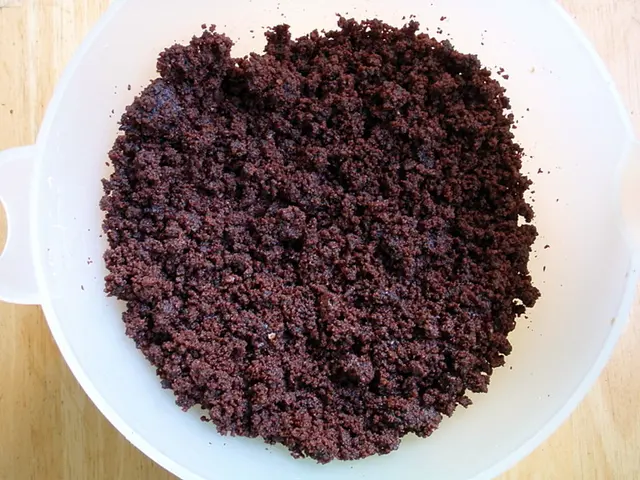Rapid and Severe Rosacea: Triggers, Signs, and Remedies
Rethinking Rosacea and Rosacea Fulminans: Dietary Influences
Rosacea, a common skin condition, and its severe form, rosacea fulminans, share many dietary triggers. Understanding these triggers can aid in managing both conditions effectively. Here's an overview of the usual dietary culprits:
Common Dietary Culprits for Rosacea:
- Spicy Foods: They contain capsaicin, which stimulates nerve endings, leading to increased blood flow, inflammation, and redness on the skin [1][4].
- Alcohol: It dilates blood vessels, causing flushing and a worsening of symptoms [1][2].
- Hot Beverages: Coffee, tea, and hot soups can increase blood flow to the skin, inducing flushing [1][5].
- Caffeine: For some people, caffeine can exacerbate symptoms by increasing blood flow [5].
- Processed Foods and Sugar: These may contribute to chronic inflammation, amplifying rosacea symptoms over time [1].
General Rosacea Triggers Beyond Diet:
- Emotional Stress: This can lead to flare-ups and heightened skin sensitivity [2][5].
- Sun Exposure: UV rays can provoke inflammation and redness [5].
- Extreme Temperatures and Weather: Harsh temperatures, wind, and humidity can aggravate rosacea symptoms [5].
While individual triggers may vary, monitoring common dietary culprits can help manage rosacea effectively. Maintaining a food diary is suggested to recognize personal triggers [3].
More about Rosacea Fulminans: Although less explored, avoidance of general rosacea triggers might help manage symptoms of rosacea fulminans, as both conditions share many similarities. This severe inflammatory skin condition usually affects females of childbearing age, and its exact cause remains unknown [6]. Treatment may involve corticosteroids, isotretinoin, stress management, and diet modification. If you experience symptoms beyond typical rosacea or acne, like large, tender nodules, sudden onset symptoms, or persistent symptoms despite tried treatments, consulting a healthcare professional is advisable [6].
- Managing rosacea, a common skin condition, and its severe form, rosacea fulminans, can be aided by recognizing shared dietary triggers in dermatology.
- Spicy foods, alcohol, hot beverages, caffeine, processed foods, and sugar are dietary culprits that can exacerbate rosacea symptoms by stimulating inflammation or increasing blood flow to the skin.
- General rosacea triggers beyond diet, such as emotional stress, sun exposure, extreme temperatures, and weather, can also aggravate symptoms.
- However, avoiding general rosacea triggers, including specific dietary culprits, might help manage symptoms of rosacea fulminans, a severe inflammatory skin condition often affecting females of childbearing age, which falls under the category of women's health and other medical-conditions related to health and wellness.
![Unknown Individual Arrested in Connection with[\'Tatiana Maksimova/Getty Images\'] Investigation...](/en/img/20250613053500_image-description-sunset-beach-landscape.jpeg)







